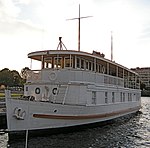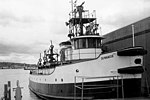A Place for Mom
A Place for Mom, founded in 2000, is a privately held, for-profit senior care referral service headquartered in New York, New York. The company provides personal and professional assistance to families in the search of senior care options. Their service is free to families. They are paid by the senior living communities and homecare providers on its platform. A majority of the company is owned since August 2017 by equity capital firms General Atlantic and Silver Lake. Insight Partners now owns a minority stake as part of the company's $175M capital raise in January 2022. Previously they used former Good Morning America host Joan Lunden in their advertising. The Company provides information regarding more than 20,000 senior housing and homecare providers to seniors and their families throughout the United States and Canada through a network of local "senior living advisors". It also serves as a marketing tool for the thousands of senior housing communities and homecare providers to which it refers. It is the largest such service in North America. In addition, A Place for Mom owns and operates SeniorAdvisor.com, a consumer ratings and reviews site for senior care providers across the U.S. and Canada.
Excerpt from the Wikipedia article A Place for Mom (License: CC BY-SA 3.0, Authors).A Place for Mom
Dexter Avenue North, Seattle Queen Anne
Geographical coordinates (GPS) Address Nearby Places Show on map
Geographical coordinates (GPS)
| Latitude | Longitude |
|---|---|
| N 47.631012 ° | E -122.341887 ° |
Address
Dexter Avenue North 1300
98109 Seattle, Queen Anne
Washington, United States
Open on Google Maps









